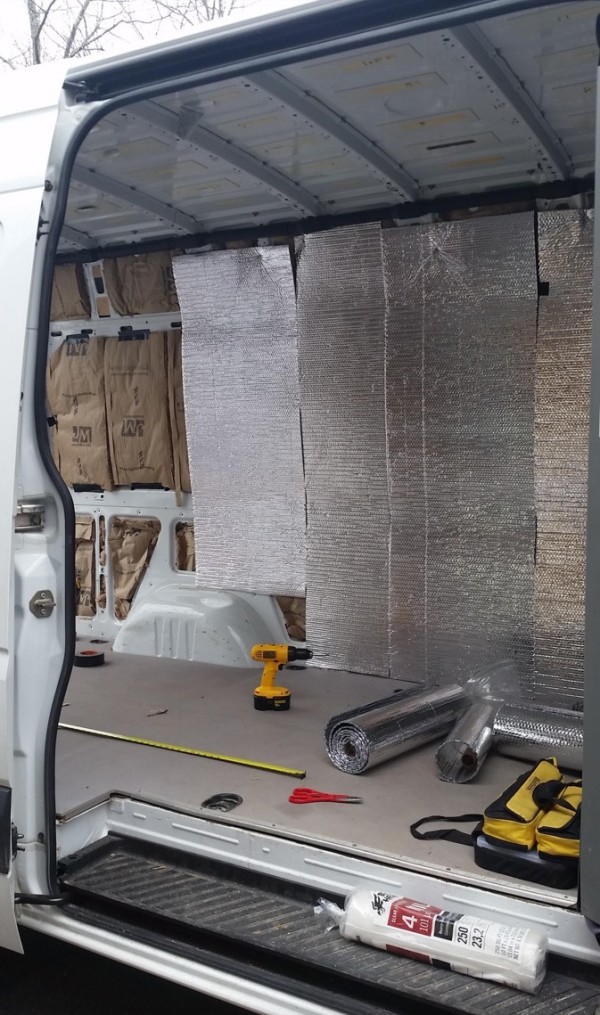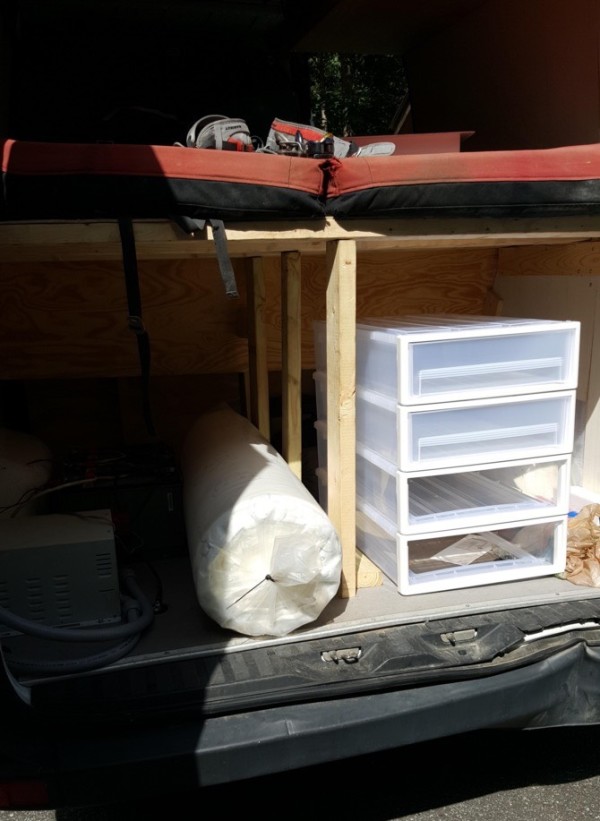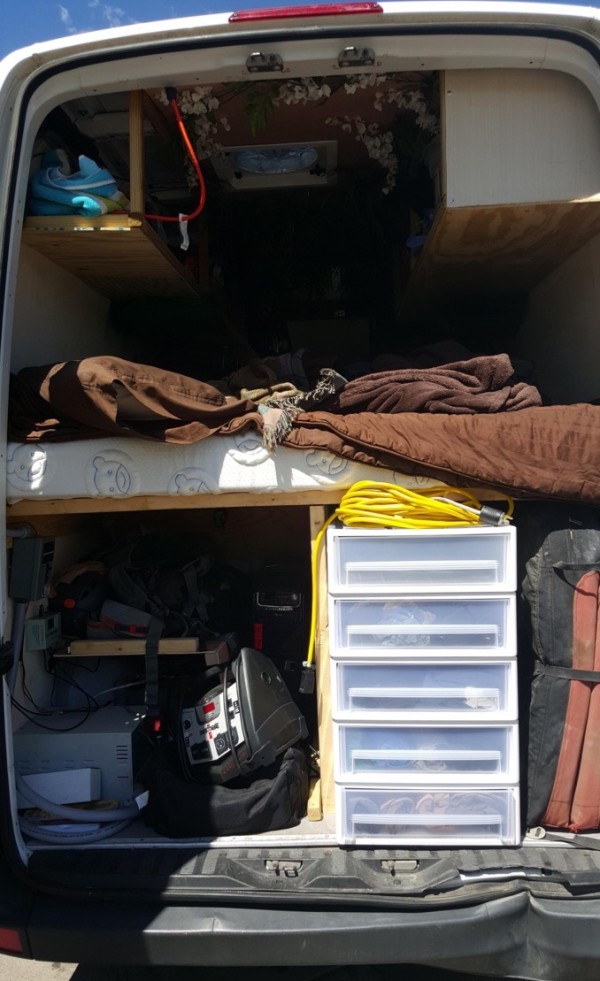This post contains affiliate links.
This is the story of how one man converts his sprinter van into a stealthy mini-motorhome.
Buying a new Sprinter motorhome can cost you upwards of $120,000 USD. Crazy, right? But if you can do it yourself, it can be less than a quarter of the cost. And you can build it your way. See how this guy did it.
Don’t miss other super awesome tiny homes like this – join our FREE Tiny House Newsletter for more!
Man Converts Sprinter Van into Awesome Mini-Motorhome

Images © chrisstyle420 via imgur

























Images © chrisstyle420 via imgur
Resources
You can share this DIY sprinter van conversion with your friends and family for free using the e-mail and social media re-share buttons below. Thanks.
If you enjoyed this sprinter van to DIY mini-motorhome you’ll absolutely LOVE our Free Daily Tiny House Newsletter with even more! Thank you!
This post contains affiliate links.
Alex
Latest posts by Alex (see all)
- Her 333 sq. ft. Apartment Transformation - April 24, 2024
- Escape eBoho eZ Plus Tiny House for $39,975 - April 9, 2024
- Shannon’s Tiny Hilltop Hideaway in Cottontown, Tennessee - April 7, 2024






In October of 2005, I purchase a brand new 2006 “Airstream Parkway” motorhome, which was the, um, “le$$ expen$ive” model (LOL!) of their “Mercedes/Dodge/Freightliner”-based “Sprinter” vans. Approximately $90,000 later (um, OUCH!) I really LOVED that motorhome, because: 1.) with the silver paint and minimal dark gray striping, it could be mistaken for a “regular” van when traveling on something like Connecticut’s “Merritt Parkway”, which forbids “normal”-sized/looking RVs. 2.) With the turbo-diesel engine, it achieved an AMAZING 20+ miles per gallon, handled well (except in really high winds…YIKES!), was roomy inside, and literally had all the comforts of home. Unfortunately, after bashing my head open and losing my job, I could no longer afford the HUGE monthly payments, and along came the “repo man”! DANG IT! Would still consider another one, although seeing how this model was done so beautifully, bet it’d be a lot LE$$ to build one myself. LOVE “Airstream” history and quality and styling, but, WHOA: after putting $5,000 “down”, my monthly payments were $809.48 per month FOR TWENTY YEARS! Um, HUH?! :-O So best of luck to the happy new owners! Many HAPPY AND SAFE SMILES PER GALLON AND HAPPY TRAILS TO YOU, PARDNER! Yee-Haw!
VERY cool! Love the greenery hanging from the “sky”. Sure you’ll enjoy!
Amanda, my engineer brother-in-law also wonders about the solar panels and offers the following clarification, because he cringes every time he reads ‘Watts per hour’ discussions:
“If those are 100 watt panels, then that’s 400 Watt*hr (Watt times hour, Wh for short) per hour of peak sunshine (i.e. 400W), so maybe 1,600 Wh = 1.6 kWh per day where the sun is high for about 4 hours/day. (You’ll get less when the sun is lower and strikes the panels at an angle less than 90°)
“That could supply a cabin with compact refrigerator, computer, and some frugal lights for maybe one-and-a half days, with the right battery, but not a hair dryer, which would go through that in 1 hour, or only 15 minutes for a clothes dryer.
“Compact refrigerator = 75W, running 50% of the time when it’s warm, so that’s 75W * 24h/day * 50% = 900 Wh or 0.9 kWh per day.
“A laptop computer draws approx. 75W, running 10% of the day = 180 Wh = 0.18 kWh, so all told you’d definitely need to be frugal in your total usage to get by on that 1.6 kWh per day.
“Here’s the critical factor — would you rather park in a shady spot (where the panels can’t reach their potential), or would you let the panels harvest all they can, in full sun, while the van gets hot?”
Yes it is hard to choose to bake in order to charge fully and faster.
Also check out the facts about the drop in solar panel output when the panel itself gets real hot. I read this but cannot supply detail from memory. Basically they need some free flow of air under them to optimize output.
I had a 2014 mb sprinter converted to a camper. I do have to park in the hot sun to charge the panels. I put some reflectix shade in the windows and use the fantastic fan. I have lived in it for a year and love it. I had it done at Florida rv sales and service custom coach creations in deland fl.
Good work and good insulation for summer heat, however in deep cold the method of insulating (which the whole RV industry does) will leave you with condensation occurring. Given time doing van dwelling with a good heat source in a solid winter freeze, heat will eventually meet the cold steel body. There will always be air there containing water vapour. You get water and damp to wet insulation without a vapour barrier. Even with a vapour barrier where can an accumulation of wetness go to. It will settle along the bottom of the steel body wall when the temperature rises and remain wet for some time without a means to escape.
I have gone with spray in insulation done by a professional. The foam is tight to the steel and air could be present in theory but negligible, contained and not carrying water vapour.
I missed a thin edge of steel rib protruding in the cabin area not covered over with foam. The cold travelled in along the steel which is surrounded with 3″ foam coverage on two sides. Presto came a drip drip drip. Just an oversight I can fix but revealing.
Something I didn’t know and wouldn’t have thought about. Thank you for sharing.
Thanks Roland. Good info. I just don’t like the toxic (yes) PU. Have you thought of sheep wool, and if, what made you choose foam?
I assume, the price. That’s valid. But as for absorbing humidity, warm and cold insulation, acoustic insulation, and every single health concern, sheep wool is unbeatable. You would need to build a steam/spa room inside, to cause so much vapor that sheep wool can’t absorb it. While a freezing winter night’s vapor is being dried out during half of the next day.
Anyway, your drip drip drip info is great!
Can you use both spray insulation and then sheeps wool. Would the PU be rendered less toxic if covered with a decent depth of sheeps wool? Has anyone done this?
Cheers,
Clare
Nice job. Would a big glass jug work to hold fresh water? my concern is plastic leeching into
the water supply. Solar is a wonderful addition in your build. P.S. many people are unaware
that Roadtrek RV’s seem to have gone bankrupt, so their small van size models are not made
as of 2019.